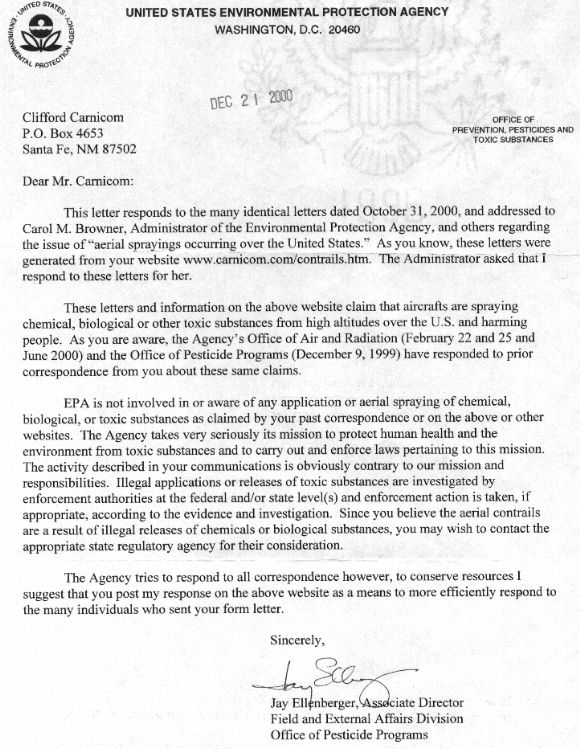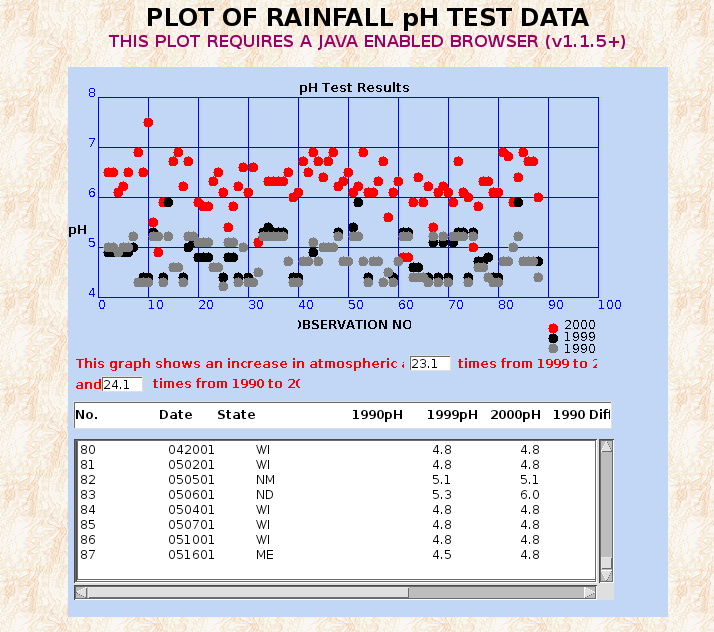
Another letter from the EPA claiming to be unaware of aerosol operations is included in this paper, despite the initial notification of accumulating evidence on the aerosol spraying on December 9, 1999. This is one of several communications from the EPA claiming to be “unaware” of any such activities. At this time, Carol Browner, the Administrator of the EPA, also refused to acknowledge the existence of a physical sample sent to her by certified mail on June 20, 2000, along with the refusal to identify the material in this sample.












